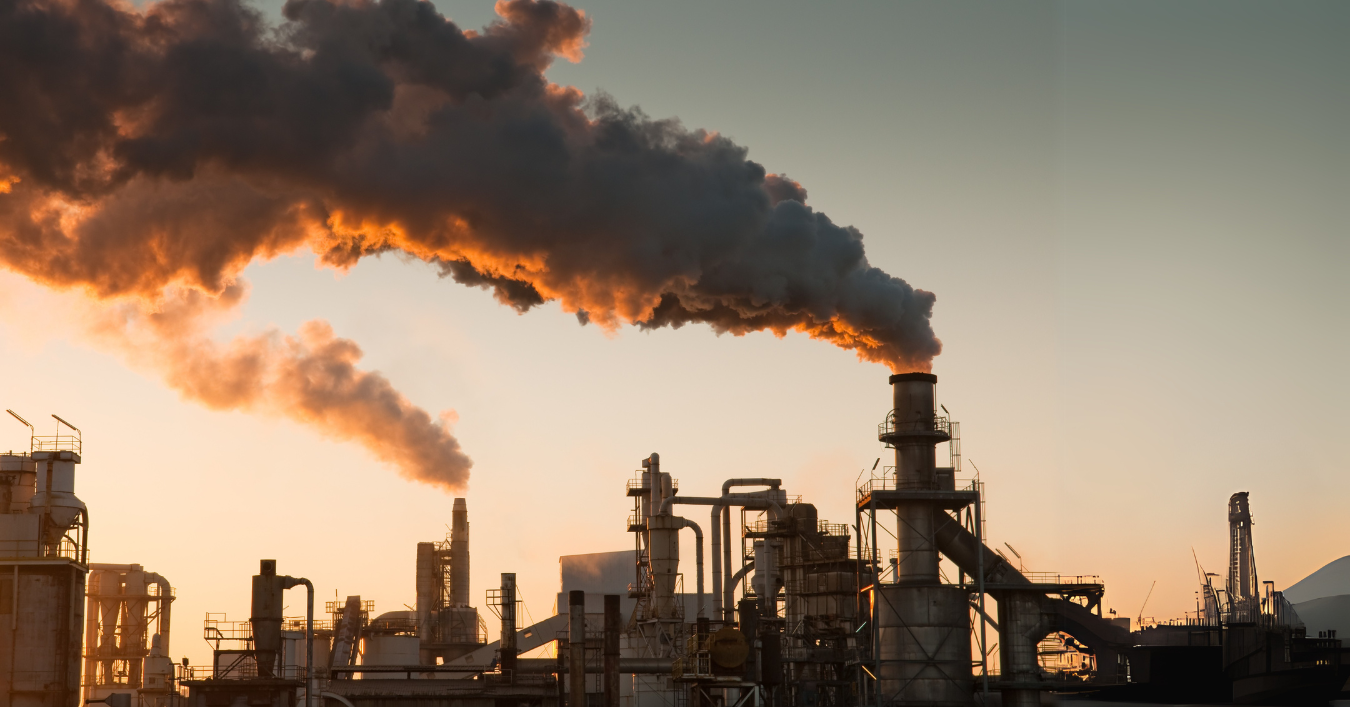
Level 2 Award in Air Pollution Control and Monitoring
- Gain an understanding of the sources and types of air pollutants and their impact on human health and the environment.
- Learn about air quality monitoring techniques, including sampling, analysis, and data interpretation.
- Understand the various air pollution control technologies used in industries and urban settings.
- Prepare for a career in environmental consultancy, air quality management, or pollution control sectors.
- Understand the key concepts of air pollution and the sources of air contaminants.
- Be familiar with the various types of air pollutants, including particulate matter, gases, and volatile organic compounds (VOCs).
- Learn how air quality is monitored, including methods for sampling, analysis, and interpreting air quality data.
- Understand the technologies and strategies used to control air pollution in both industrial and urban environments.
- Gain knowledge of the regulatory frameworks that govern air quality and pollution control.
- Introduction to Air Pollution
- Overview of the importance of air quality and the impacts of air pollution on human health, ecosystems, and climate change.
- Study of the main sources of air pollution, including industrial, transport, and agricultural emissions.
- Types of Air Pollutants
- Examination of common air pollutants, such as particulate matter (PM), nitrogen oxides (NOx), sulfur dioxide (SO2), carbon monoxide (CO), and ozone (O3).
- Understanding the chemical composition, sources, and environmental effects of each pollutant.
- Air Quality Monitoring Methods
- Introduction to techniques for monitoring air quality, including passive and active sampling, remote sensing, and continuous monitoring systems.
- Study of different types of air quality sensors and equipment used in data collection.
- Air Pollution Control Technologies
- Overview of technologies used to control air pollution, including scrubbers, filters, electrostatic precipitators, and catalytic converters.
- Introduction to innovative technologies like low-emission vehicles, green infrastructure, and renewable energy solutions.
- Data Interpretation and Air Quality Standards
- Understanding how to analyze and interpret air quality data and determine pollution levels.
- Study of global and national air quality standards and regulations, including air quality index (AQI) and acceptable pollutant levels.
- Environmental and Regulatory Frameworks
- Study of the policies and regulations that govern air quality and pollution control, including international agreements and local environmental standards.
- Overview of the role of environmental agencies and organizations in air pollution management.
- Sustainable Solutions for Air Pollution Control
- Exploration of sustainable and cost-effective strategies for air pollution prevention and control.
- The role of urban planning, green technologies, and community awareness in reducing air pollution.
- Progress to further studies in environmental science, pollution control technologies, or air quality management.
- Work in roles such as air quality monitor, environmental consultant, pollution control engineer, or regulatory compliance officer.
- Pursue careers in governmental agencies, environmental consultancies, or industries that focus on air quality improvement and environmental protection.
- Comprehensive Knowledge: The course provides a solid foundation in air pollution control and monitoring, crucial for anyone looking to work in environmental protection or pollution management.
- Practical Application: Learn practical skills through case studies, real-world applications, and examples of air pollution monitoring and control.
- Expert Instruction: Study under the guidance of experienced professionals in the field of air quality and environmental management.
- Globally Recognized Certification: Obtain a certification that is respected in the environmental and pollution control industries, enhancing career opportunities.
Study Units
- Introduction to Air Pollution
- Overview of the importance of air quality and the impacts of air pollution on human health, ecosystems, and climate change.
- Study of the main sources of air pollution, including industrial, transport, and agricultural emissions.
- Types of Air Pollutants
- Examination of common air pollutants, such as particulate matter (PM), nitrogen oxides (NOx), sulfur dioxide (SO2), carbon monoxide (CO), and ozone (O3).
- Understanding the chemical composition, sources, and environmental effects of each pollutant.
- Air Quality Monitoring Methods
- Introduction to techniques for monitoring air quality, including passive and active sampling, remote sensing, and continuous monitoring systems.
- Study of different types of air quality sensors and equipment used in data collection.
- Air Pollution Control Technologies
- Overview of technologies used to control air pollution, including scrubbers, filters, electrostatic precipitators, and catalytic converters.
- Introduction to innovative technologies like low-emission vehicles, green infrastructure, and renewable energy solutions.
- Data Interpretation and Air Quality Standards
- Understanding how to analyze and interpret air quality data and determine pollution levels.
- Study of global and national air quality standards and regulations, including air quality index (AQI) and acceptable pollutant levels.
- Environmental and Regulatory Frameworks
- Study of the policies and regulations that govern air quality and pollution control, including international agreements and local environmental standards.
- Overview of the role of environmental agencies and organizations in air pollution management.
- Sustainable Solutions for Air Pollution Control
- Exploration of sustainable and cost-effective strategies for air pollution prevention and control.
- The role of urban planning, green technologies, and community awareness in reducing air pollution.
Upon completing this award, learners will:
- Understand the key concepts of air pollution and the sources of air contaminants.
- Be familiar with the various types of air pollutants, including particulate matter, gases, and volatile organic compounds (VOCs).
- Learn how air quality is monitored, including methods for sampling, analysis, and interpreting air quality data.
- Understand the technologies and strategies used to control air pollution in both industrial and urban environments.
- Gain knowledge of the regulatory frameworks that govern air quality and pollution control.
This course is ideal for individuals who are passionate about improving air quality and want to build a career in environmental protection, pollution control, or regulatory compliance. It’s especially designed for:
Aspiring Environmental Professionals
Those planning to enter the environmental sector with a focus on air quality, monitoring, and pollution control.
Science and Engineering Students
Students in environmental science, chemistry, mechanical or civil engineering looking to specialize in air quality or emissions control.
Environmental Consultants and Technicians
Professionals working in environmental consultancy or compliance roles who want to deepen their knowledge of air pollution monitoring and control technologies.
Industry and Factory Personnel
Technicians and engineers working in industries with emissions who need to understand control technologies and environmental regulations.
Regulatory and Government Staff
Employees in environmental protection departments or agencies responsible for monitoring and enforcing air quality standards.
Urban Planners and Sustainability Advocates
Individuals involved in city planning or environmental advocacy who need to understand the effects of air pollution and sustainable mitigation strategies.
Career Changers and Lifelong Learners
Anyone interested in transitioning into environmental or sustainability-focused roles, particularly those concerned with public health and air quality.
Our assessment process is designed to ensure every learner achieves the required level of knowledge, skills, and understanding outlined in each course unit.
Purpose of Assessment
Assessment helps measure how well a learner has met the learning outcomes. It ensures consistency, quality, and fairness across all learners.
What Learners Need to Do
Learners must provide clear evidence that shows they have met all the learning outcomes and assessment criteria for each unit. This evidence can take different forms depending on the course and type of learning.
Types of Acceptable Evidence
Assignments, reports, or projects
Worksheets or written tasks
Portfolios of practical work
Answers to oral or written questions
Test or exam papers
Understanding the Structure
Learning outcomes explain what learners should know, understand, or be able to do.
Assessment criteria set the standard learners must meet to achieve each learning outcome.
Assessment Guidelines
All assessment must be authentic, current, and relevant to the unit.
Evidence must match each assessment criterion clearly.
Plagiarism or copied work is not accepted.
All learners must complete assessments within the given timelines.
Where applicable, assessments may be reviewed or verified by internal or external quality assurers.
Full learning outcomes and assessment criteria for each qualification are available from page 8 of the course handbook.
Top Courses
No results found.
Related Courses
Let's Get in touch
Deleting Course Review
Course Access
This course is password protected. To access it please enter your password below:



